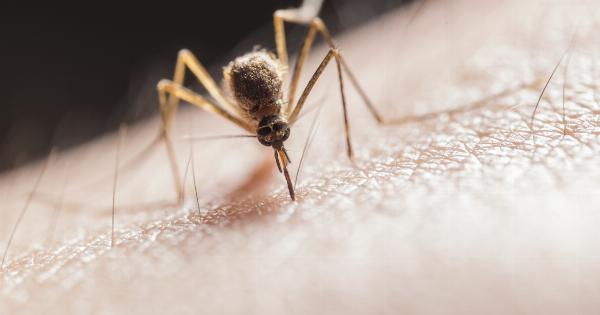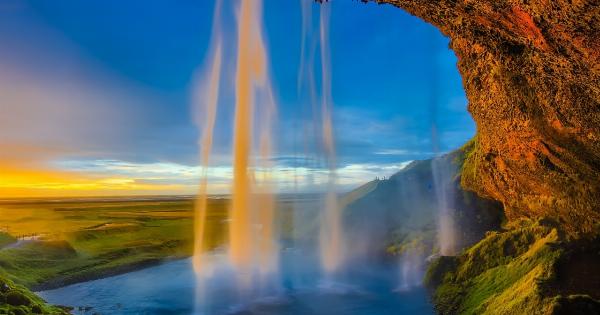With warmer weather comes the desire to spend more time outdoors. Whether you are hiking, camping, or simply enjoying a stroll through the park, it is important to be aware of the potential dangers that can come with outdoor activities.
One such hazard that is prevalent in many parts of the world is ticks. These tiny creatures may be small, but their bites can cause big problems. In this article, we will explore the various ways to avoid tick bites and protect yourself from these pesky parasites.
Understanding Ticks
Ticks are external parasites that belong to the arachnid family. They are commonly found in grassy, wooded areas and can easily attach themselves to humans or animals when they pass by.
Ticks thrive in humid environments and are most active during the warmer months, typically from spring to fall.
There are several species of ticks, but the most common ones include the black-legged or deer tick, the American dog tick, and the lone star tick.
These ticks can carry and transmit various diseases such as Lyme disease, Rocky Mountain spotted fever, and babesiosis.
The Importance of Tick Bite Prevention
Preventing tick bites is crucial because these tiny creatures can transmit harmful diseases to humans. Some of the most common tick-borne diseases include:.
-
Lyme Disease:
Caused by the bacterium Borrelia burgdorferi, Lyme disease can lead to serious health issues when left untreated. Symptoms may include fever, fatigue, headache, muscle and joint aches, and a distinct “bullseye” rash. -
Rocky Mountain Spotted Fever:
This bacterial infection can cause fever, headache, rash, and potential organ damage if not treated promptly. -
Babesiosis:
Babesiosis is caused by microscopic parasites that infect red blood cells. It can lead to flu-like symptoms, anemia, and in severe cases, organ failure.
Considering the potential seriousness of these diseases, taking steps to prevent tick bites is crucial for ensuring your well-being while enjoying outdoor activities.
Tick Bite Prevention Tips
Here are some effective ways to avoid tick bites:.
1. Wear Protective Clothing:
When venturing into tick-infested areas, it is essential to wear protective clothing. Opt for long sleeves, long pants, and closed-toe shoes to minimize exposed skin.
Tucking pant legs into socks or shoes can also prevent ticks from crawling up your legs.
2. Use Insect Repellent:
Applying an insect repellent containing 20% or more DEET (N, N-diethyl-meta-toluamide) on exposed skin can deter ticks from biting. Alternatively, you can choose repellents with picaridin or oil of lemon eucalyptus (OLE) as active ingredients.
Remember to follow the instructions and reapply as necessary.
3. Perform Regular Tick Checks:
After spending time outdoors, make it a habit to thoroughly check your body for ticks. Pay extra attention to hidden areas such as the armpits, scalp, groin, and behind the knees.
Promptly removing any attached ticks reduces the risk of disease transmission.
4. Stay on Designated Trails:
When hiking or walking in natural areas, sticking to designated trails can help minimize contact with ticks. Ticks tend to reside in tall grasses and bushes, so avoiding these areas can reduce the chances of ticks latching onto your clothing or skin.
5. Create a Tick-Free Yard:
If you have a yard, you can take steps to make it less attractive to ticks. Regularly mow the lawn, clear leaf piles, and minimize vegetation around recreational areas.
Creating a barrier with wood chips or gravel between your lawn and wooded areas can also discourage ticks from venturing into your yard.
6. Treat clothing and gear with Permethrin:
Permethrin is a highly effective tick repellent that can be used on clothing, shoes, and camping gear. Treating your outdoor gear with permethrin can provide long-lasting protection against ticks.
However, it is essential to strictly follow the instructions when using this chemical.
7. Protect Pets:
Ticks can easily latch onto your pets while outdoors, and they can also carry tick-borne diseases. Use tick preventive products recommended by your veterinarian to protect your furry friends and reduce the risk of ticks entering your home.
8. Shower After Outdoor Activities:
After spending time outdoors, take a shower to wash off any unattached ticks that may be crawling on your body. This can help you spot and remove ticks more easily.
9. Be Aware of Tick Season:
Knowing when ticks are most active in your region can help you take extra precautions during peak seasons. Stay informed about the local tick population and the diseases prevalent in your area.
10. Learn How to Properly Remove Ticks:
If you find an attached tick, it is important to remove it promptly and correctly. Use fine-tipped tweezers to grasp the tick near the mouthparts and pull gently but firmly upward.
Avoid twisting or crushing the tick, as this can increase the risk of disease transmission. After removal, clean the bite area with soap and water, followed by an antiseptic.
Conclusion
Tick bites can lead to serious health complications, but with proper precautions, you can significantly reduce the risk of encountering these pesky creatures.
By wearing protective clothing, using insect repellent, performing regular tick checks, and following other preventive measures, you can enjoy your time outdoors with peace of mind. Remember to consult with healthcare professionals if you develop any symptoms after a tick bite. Stay informed, be proactive, and protect yourself from tick-borne diseases!.




























